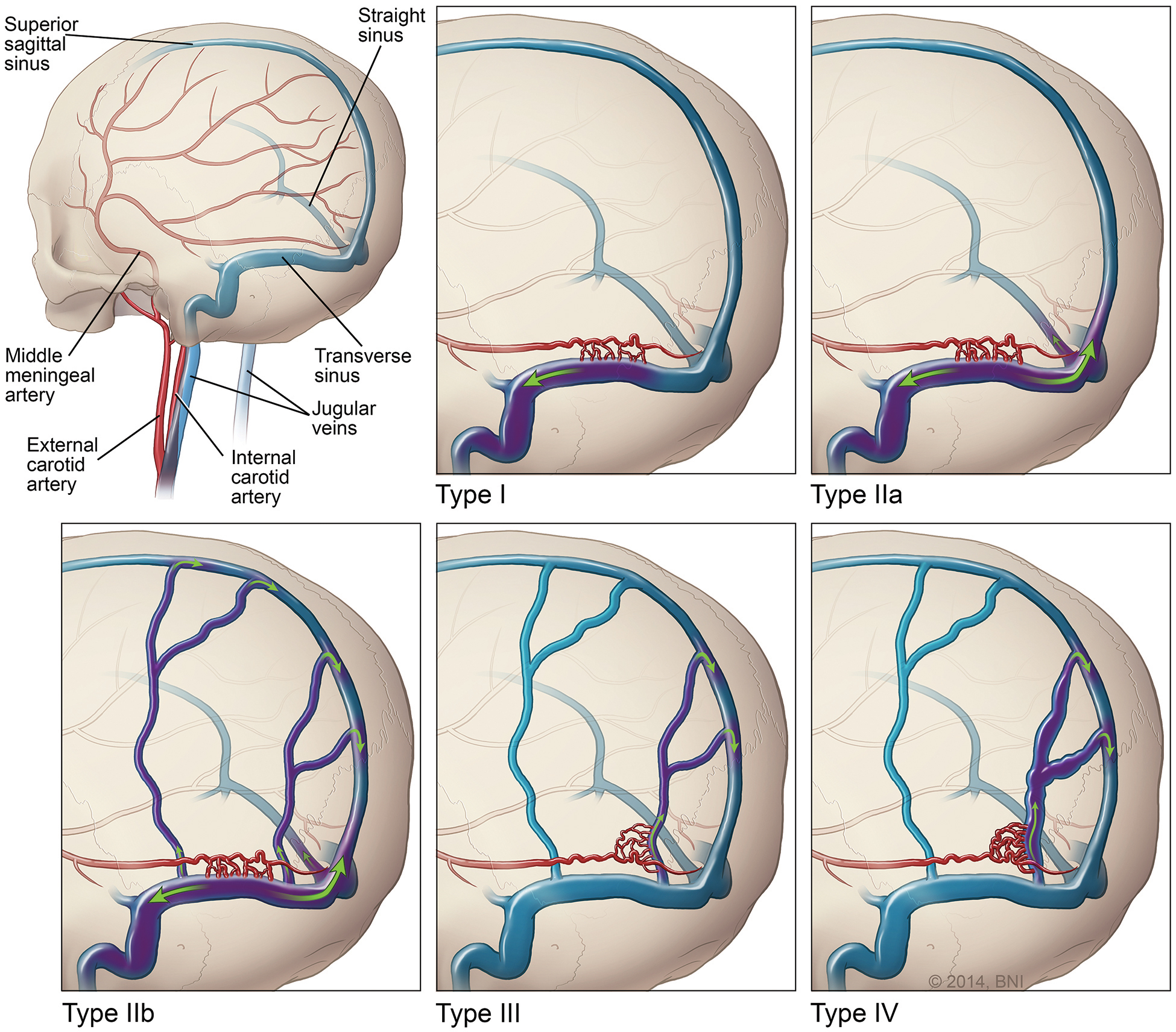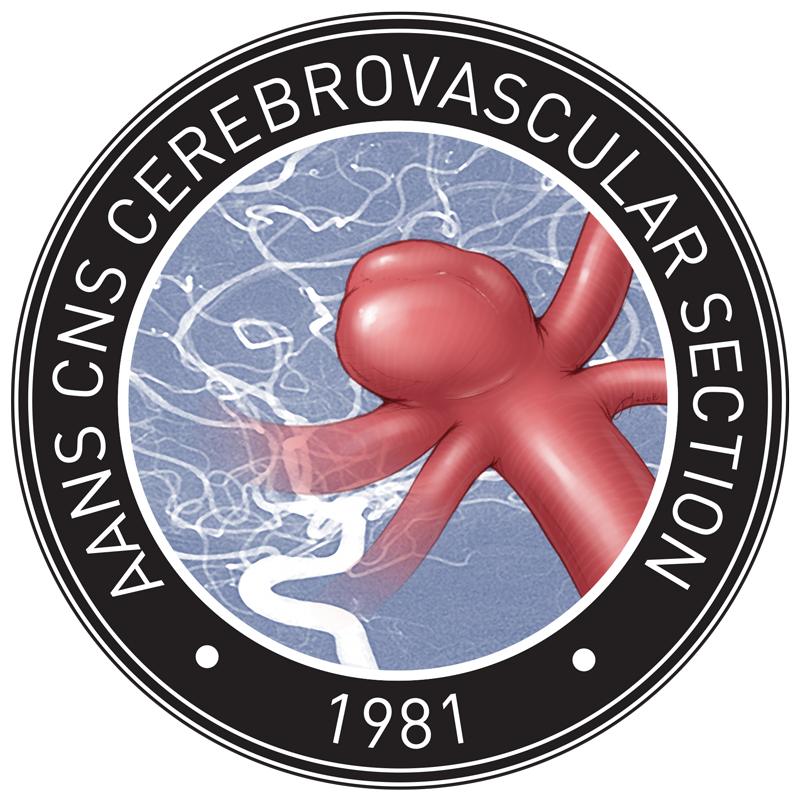AV Fistula Images
The series of illustrations above demonstrate different types of arteriovenous fistulae. The red vessels represent the arteries that are normally in the coverings of the brain, the meninges. These arteries have abnormal connections to the venous drainage of the brain when a fistula is present. The types listed above represent increasing risk of neurologic injury and bleeding. Type I lesions are abnormal connections to the dural sinuses without changes in the direction of blood flow in the brain. Type IIa fistulas are similar to type I, however the blood flow is partially reversed in the dural sinus. Type IIb lesions show flow reversed in the dural sinuses and also show flow through the veins on the surface of the brain. Type III fistulas no longer have direct drainage into the dural sinuses. Instead the fistula drains directly into the veins on the surface of the brain. Type IV fistulas are similar to type III, however now the veins on the surface of the brain are dilated and showing signs that they have been under increased pressure.

